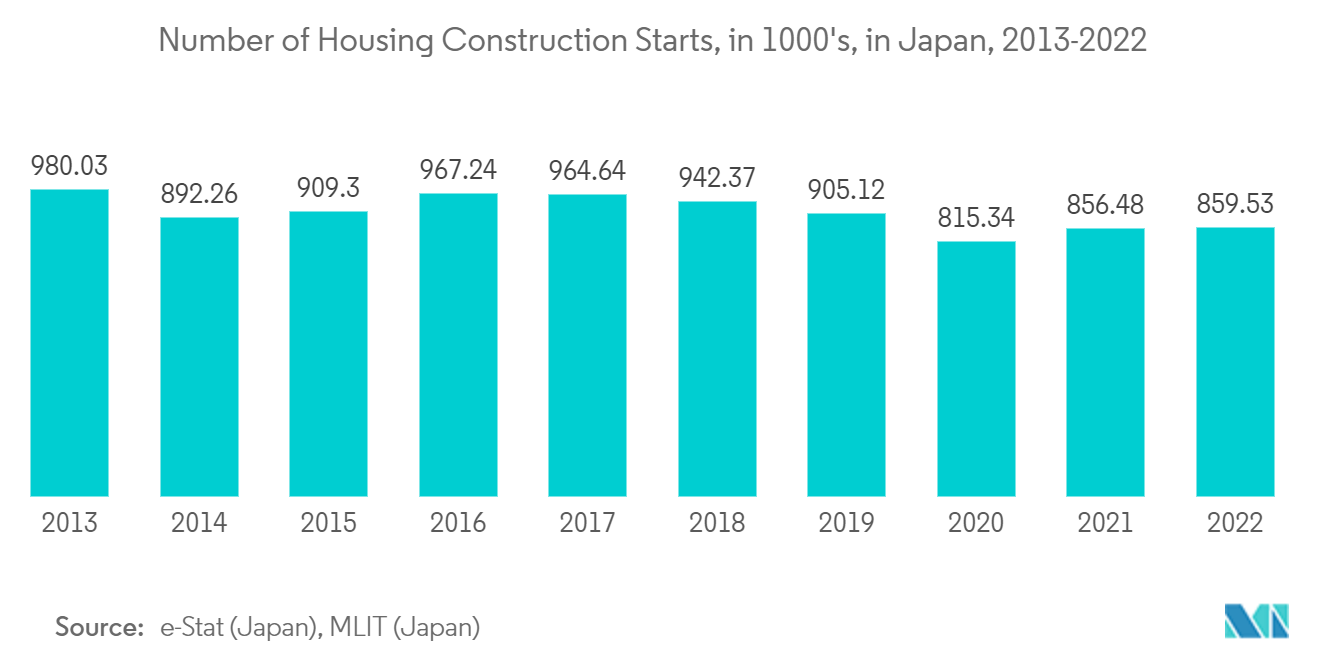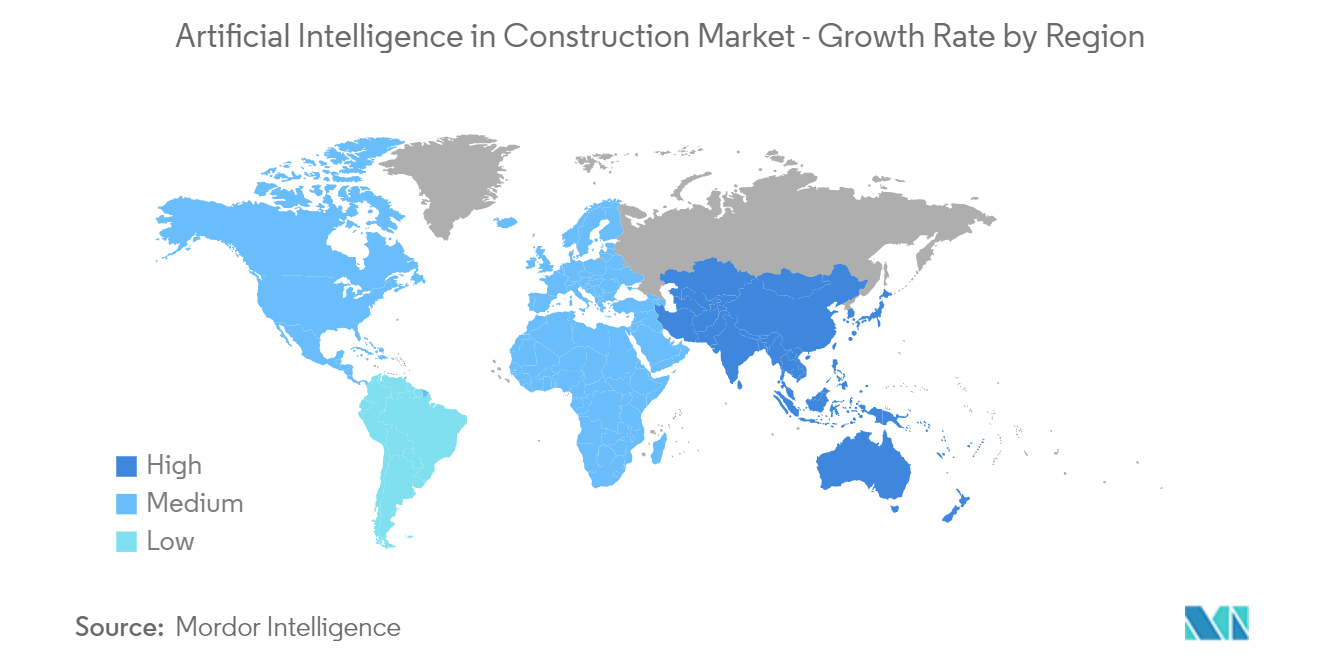Market Trends of AI In Construction Industry
Planning and Design Application Segment is Expected to Hold Significant Market Share
- The application of AI in the planning and design segment of the construction industry offers several benefits, ranging from enhanced efficiency and accuracy to improved decision-making. Planning and design are crucial phases of construction. Any flaws or errors committed at this stage of development may incur a severe loss to the contractors in the later stages of the project. Such scenarios lead to many budget constraints and delays in project completion.
- The adoption of Building Information Modeling in the construction industry has emerged as a new way to create the 3D models that construction professionals rely on to design, build, and repair accurately over the past few years. BIM platform programmers are improving the capabilities of BIM with smart, AI-driven features. In September 2022, construction technology startup Toric, a data platform used by construction, engineering, and similar sectors that enabled anyone to integrate, transform, model, and visualize data without writing code, raised USD 22 million in funding. As part of the investment, Toric will offer new integrations for Autodesk Construction Cloud and Autodesk's BIM design tools, such as Revit, Navisworks, and Civil 3D.
- BIM applies various tools and technologies, including machine learning, to help teams avoid a common, costly issue: duplicated work. Sub-teams working on shared projects often spend time creating models that other sub-teams have already made. With BIM, users "teach" machines to use algorithms to generate designs with multiple variations. As the AI builds models, it learns from each iteration until it comes up with the ideal model.
- Generative design involves using AI algorithms to explore various design possibilities based on defined parameters and constraints. AI can generate and evaluate multiple design options against performance criteria such as structural integrity, energy efficiency, or cost-effectiveness. This approach allows designers and architects to quickly generate innovative and optimized designs that meet project requirements.
- VR and AR technologies offer immersive and interactive experiences that aid in visualizing and communicating design concepts. AI can enhance VR and AR applications by generating realistic virtual environments, incorporating real-time data, and enabling real-time interactions. Designers, architects, and clients can use VR and AR to walk through virtual buildings, assess spatial relationships, and make design decisions based on realistic simulations.
- The number of housing construction projects plays a significant role in driving AI's planning and design segments in the construction market. As housing construction projects increase, the demand for efficient and effective planning and design processes also rises. AI technologies offer valuable capabilities that can support and enhance these segments. According to e-Stat (Japan) and MLIT (Japan), approximately 859.5 thousand housing starts were initiated in Japan in 2022. This represented an increase of 0.4 percent compared to the previous year. The highest figure during the surveyed period was recorded in 2013.

North America is Expected to Hold Significant Market Share
- The North America market for artificial intelligence (AI) in construction has been experiencing significant growth in recent years. The region has been at the forefront of technological advancements and digital transformation in the construction industry.
- The North American market for AI in construction is one of the largest and fastest-growing globally. The market is driven by increasing construction activities, demand for advanced technologies, and a focus on improving productivity and efficiency. The market encompasses various AI applications across different stages of the construction lifecycle, including planning, design, construction, and operations.
- North America, particularly the United States, has been a hub for technological innovation in the construction industry. Many regional companies have been at the forefront of developing and implementing AI technologies for construction applications. The market has witnessed the adoption of AI-driven solutions such as predictive analytics, computer vision, robotics, and machine learning across construction processes.
- North America has a robust infrastructure development sector, including residential, commercial, and public infrastructure projects. The region experiences urbanization and population growth, driving the demand for new construction projects. AI technologies are increasingly integrated into construction processes to optimize project planning, design efficiency, and operational management.
- North America has a well-defined regulatory environment that governs construction practices and safety standards. The regulatory landscape influences the adoption of AI in construction, as compliance with regulations and standards is crucial. AI technologies can help construction companies adhere to regulatory requirements, enhance safety measures, and improve overall compliance in the industry.
- As the North American construction industry embraces digital transformation, AI technologies are expected to improve productivity, safety, and project outcomes. The market is characterized by a growing ecosystem of AI technology providers, construction firms, and research institutions working together to drive innovation and advance the adoption of AI in construction practices.

